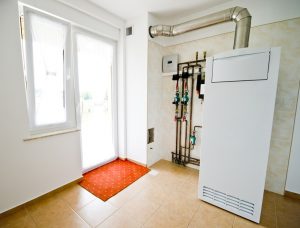 Fall has just begun, and soon enough temperatures will drop to the point that you’ll need your heating system running a regular basis. What’s more, you need that heating system to work flawlessly—and efficiently as possible. The best way to ensure this is the case is by having a maintenance tune-up done on your system, if you haven’t already done so. For a furnace, this should be done once a year, and is one of the most important Tacoma, WA furnace services you can have done.
Fall has just begun, and soon enough temperatures will drop to the point that you’ll need your heating system running a regular basis. What’s more, you need that heating system to work flawlessly—and efficiently as possible. The best way to ensure this is the case is by having a maintenance tune-up done on your system, if you haven’t already done so. For a furnace, this should be done once a year, and is one of the most important Tacoma, WA furnace services you can have done.
Whether you skipped maintenance, or you have an older furnace that’s already been experiencing problems, it’s important to keep your eyes out for signals that something is amiss with your heater. Calling in a pro for inspection and repairs at the first sign of trouble is the best way to ensure you won’t have too big of an interruption in service. And the good news is there are some common signs we can have you look out for! We’ll get to those in a moment.
Do Not Attempt Furnace Services on Your Own
Remember, you should not attempt a formal diagnosis or repairs on your heater by yourself. Heating systems involve a number of components that can be harmful to you—such as gas—that require professional training and licensing to deal with. Fortunately, you don’t have to make a formal diagnosis to know something is amiss with the system.
Call for Repairs When You Spot These Signs
Common signs that your furnace is failing, or at least needs service of some kind, include:
- Odd Noises: We’re talking about anything you don’t usually associate with the noises that your furnace makes while it’s in operation. This can include hums, bangs, rattles, groans, and buzzes. In most cases, the noises will start and stop with the starting and stopping of the furnace itself.
- Low Heat Output: You can likely spot the signs of a problem if the air blowing through your vents is cool. The same is true for air that is lukewarm—not warm as you expect or as it should be. This means your furnace has to struggle in order to reach your desired temperature.
- Low Airflow: Similarly, a problem with the fan or a blockage in the system can lower the flow of air through the ductwork, making it harder for your furnace to do its job.
- Short-Cycling: This is the name given to the process where the heating system turns on and off rapidly. This can be caused by a furnace that’s too large for the home its installed in, but if that’s the case then you’ll notice it right away after installation. Otherwise, it can be an electrical connection problem that should be checked out right away to ensure safety.
- Difficulty Starting or Failure to Start: A furnace that doesn’t start up as it should almost definitely has a safety issue—it could be a gas leak, a faulty ignition, or some other issue that could wind up being a real threat to your home. The fact that your furnace won’t start is actually a good sign—it means the safety features of the furnace have prevented it from starting up. But this does mean you need to call for repairs right away!
